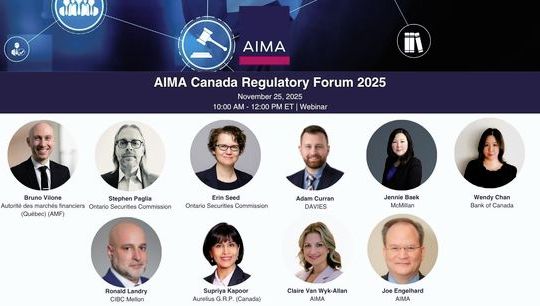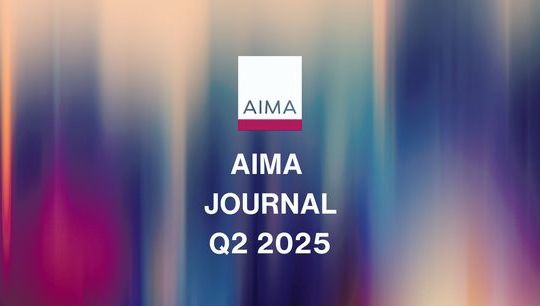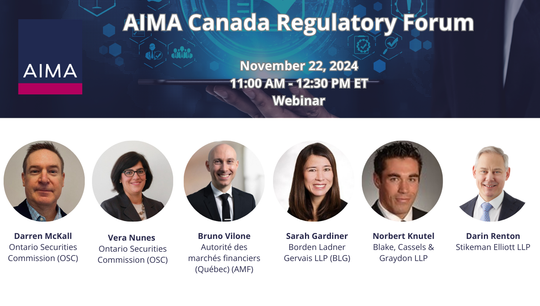Screening advisors for high net worth investors: A checklist provides a framework in the selection process
By David Rowen, CFA, FRM, Managing Director, Phocion Investments Inc
Published: 30 September 2015
In today’s investment arena, high net worth (HNW) individuals are challenged to choose the best advisor to meet with their unique, individual circumstance. Several issues need to be kept in mind during the selection process. No matter whether the advisor is employed by a large or small firm, investors need to be armed with the right checklist to minimise mistakes. Large investment advisory firms do allocate additional resources to protect against reputational risk. However, they also tend to be more complex entities and therefore it should not be assumed that they always represent a lower risk proposition as compared to their smaller peers. This article provides a framework of items to pay attention to when deciding on an advisor.
Credentials and experience matter
One’s wealth needs to be managed with utmost integrity and professionalism. To increase the odds of this, investment advisors should possess superior credentials and a vast amount of experience. The gold standard, the Chartered Financial Analyst® (CFA) credential, has become the most respected and widely recognised investment designation in the world. CFA® represents a high level of commitment to the evolving field of investments, and a strong understanding of financial theory. If the advisor does not have the credential ask him whether he intends on completing it. If the answer is “no”, ask why not.
HNW investors should also consider the amount of years that the advisor has worked within the investment industry. Experience breeds wisdom, which can be invaluable. Questioning the advisor on how he dealt with two or three specific turbulent periods in the market may provide valuable insight as to whether this person would be the right match. A minimum of 10 years of experience should be sought.
Advisors need to “know your client”
Advisors are in the business of earning a living by growing their assets under management. To do so successfully requires a certain degree of skill at selling. When confronted with a prospect, advisors are wired to perform a three-step selling process that takes the form of: Meet, Propose and Close. The “Propose” stage represents an opportunity for the advisor to provide a customised proposal. For the investor, this document is very important as it provides a clear indication whether the advisor listened to his investment objectives and tolerance for taking on risk during the initial meeting. It is also an opportunity to see whether the advisor understood the client’s source of wealth and backstory. The proposal is unlikely to witness the misspelling of the prospect’s name, although stranger things have happened. If a proposal consists of too much boiler-plate and not enough original content, the recommendation is straightforward: run for the hills!
Another consideration is the turnaround time. For instance, if it takes twelve days to receive the proposal despite the advisor having a ten-person team working for him, this would not be a good sign. Especially if the expectation was given such that the document would be prepared within a few days.
Understanding the advisor’s distinctiveness
Every advisor is distinct and making an effort to understand this is important. For instance, knowing how many clients the advisor has may provide one with an idea as to whether capacity exists to properly service new client relationships. For instance, if the advisor claims to have 200 clients all of which are serviced by himself, it is more than likely that he is dropping the ball on client servicing or in monitoring client portfolios, or both. At the very least, one should sit down one-on-one with their investment advisor once per year. Establishing the frequency of interaction early on in the relationship is imperative.
Also, understanding whether the advisor will be present himself during the service call or will have a representative is also important. Being serviced by someone else is fine so long as the client has been properly introduced and feels comfortable with this person. Looking forward to a meeting only to learn on the spot that someone else is representing the advisor is a strong signal for questioning whether one’s wealth is being properly cared for. This type of behaviour can happen and especially by advisors that are driven by their bonus rather than by building solid, long-term business relationships.
Conflictsof interest need disclosure
When it comes to conflicts of interest, the important thing is full disclosure. Failing to do so can give the impression of impropriety even if none is present. Performing background checks and asking questions may reveal that the advisor is performing additional paid professional duties such as being on boards of directors or having a consulting business on the side. These additional functions create a concern over whether the advisor is:
- Committed to meeting their fiduciary duty
- Misappropriating client information
Through questioning, one may come to learn that the advisor has a referral agreement with an accountant or lawyer with advantageous terms. Full and transparent disclosure is required, and a candid discussion around determining the conflicts’ impact on the advisor’s focus needs to take place.
Products and processes
HNW investors should bear in mind that past performance has no bearing on future performance. Having said this, they should make it a point to investigate what their advisor’s investment performance has been over one, five and ten years. Investors should also study the various portfolios being proposed to ensure that there do not exist the same underlying investments across investment vehicles. Investors should understand the kind of investment vehicles being used such as:
- Traditional investments: stocks, bonds and mutual funds.
- Alternative investments: hedge funds, high-yield debt, real assets and emerging markets
Understanding where the investment securities are held is also an important piece of information. For instance, if they are held in “client name” it typically means that they are placed in safekeeping at a third-party custodian. However, if held in “street name” the securities would remain in the advisor firm’s custody.
In a structure where an advisor’s firm selects pooled funds from external managers, the investor should comprehend the manager selection process. For instance, do managers present their portfolio with some frequency to a Steering Committee justifying their performance? Is there operational due diligence (ODD) performed on the managers to ensure that they follow best practices? Is there preference given to a certain family of products influenced by the conflict of an ownership interest? Is there some other bias such as the concentration of managers in certain geographies? If there is a selection of more than one manager are the strategies different? Investors need to ask these questions and others like them simply to ensure that manager selection is performed with integrity.
Similarly, if the advisor and his team select securities, the investor should understand the process. Understanding the advisor’s investment philosophy and process is important. Who makes the final decision? Is there a security screening process in place? Does the advisor use his own tools or does he use tools provided for by his firm? Is there a top-down, bottom-up bias? Are decisions driven by fundamentals, technical analysis or perhaps both methods?
Basic questions need answers
Ensuring that the advisor actually has a handle on the proposed investment strategy is critical. One way to investigate would be for the investor to inquire how the proposed mandate performed under a period of high volatility.
Knowing the projected average portfolio turnover is important. A higher percentage of turnover may infer a higher level of capital gains taxes, whereas a lower percentage may signal a high level of tax deferral. The advisor should be able to quickly provide the investor with this information during the proposal stage. If he is not able to do so it may indicate that he does that not have a concrete investment philosophy.
Investors should put the question to the advisor how long it would take to gain access to their wealth – in other words, liquidity. In the case whereby public securities would be redeemed the answer would be three business days.
Performance
When it comes to investing, past performance does not dictate future performance. Nevertheless, looking at what the advisor has delivered in the past is indeed important because in essence it represents a live case study. Investors should study the proposed investment portfolios on a relative basis by comparing each to their appropriate benchmark on a one, five and 10-year basis. In Excel, one can create a nice visual of the relative performance of varying portfolios and their time periods. For instance, a green cell may indicate an outperforming time period and while red cell an underperforming time period. The following table provides a visual:

Stay clear of advisors that calculate and publish their own performance
When being presented with performance returns in marketing presentations, HNW investors should ask the investment advisor which person was responsible for actually calculating the returns. Should the advisor mention that he and his team calculate and publish the returns this would constitute a violation of industry best practices. The advisor and his team may reveal that the returns were vetted by their firm’s compliance department. However, one should be cautioned to take too much stock in these performance numbers. For one, the lack of duty segregation creates a conflict of interest that unavoidably makes one question the integrity of the numbers. Secondly, compliance departments understand the nuances of compliance, however they lack the intricate knowledge about performance, which is a completely different discipline. More than likely, the compliance department never even looked at the formulas behind the performance computations and they certainly cannot keep on top of it daily, weekly or monthly. Advisors who calculate and publish their own performance should be eliminated from being considered in the management of wealth.
Marketing material can mislead – be ready
Just because tables, facts and figures are in print and provided by an advisor does not mean that they are absolutely without error. Mistakes can be made some of which are the result of the advisor firm’s missed oversight. To increase certainty what one is presented is correct, the investor should take out a pencil and paper, or use an Excel spreadsheet. Mistakes could include:
- Asset mix summaries
- Security sector allocation
Be prepared to inspect each provided document.
Personal trading policies and procedures
HNW investors should inquire about the policies and procedures that are put place at advisor firms that ensure that personal trading activities are made transparent and do not occur ahead of client transactions. Trading ahead of clients is an activity that is known as “front-running” and is not permitted by law. At no time can an advisor or another firm place personal trade order ahead of clients’. Typically, a restricted securities list is created as a pre-emptive measure to front-running. As well, some firms take it many steps further and prohibit all active employee transactions all together. In these cases, employees are only allowed to invest their personal wealth by using managed accounts, mutual funds, ETFs, index products and the like.
Anti-money laundering and client information
With the influx of globalisation, investment advisor firms require increasingly stricter processes, procedures and policies in regards to anti-money laundering, suspicious transactions and relationships with politically exposed persons. HNW investors need to ask their advisors what controls are in place to protect against related malfeasance. This is important for smaller firms but equally if not more so for larger ones, particularly those with a global footprint.
Advisors also need to provide concrete ways in which client information is protected. HNW should hope to hear that the advisor firm’s culture around client confidentiality has become increasingly rigorous and that all employees must pass an exam at least with annual frequency. As well, manuals and other reference sources such as intranet are also valuable aids.
Fee structure
When it comes to fees, the devil is in the detail. HNW investors need to clarify the following fee types:
- Management fees
- Mutual/pool fund management expense ratios (MERs)
- Transaction fees
- Custodian fees
In addition to understanding the above percentages, the HNW investor should comprehend the total fee dollar amount. A management fee of 1% does not sound like much. However, when applied to a $2 million pool of capital pool, this would amount to $20,000, which is significant even for an affluent investor. Again, it comes down to full transparency and to make certain that the advisor is providing it with respect to the fee structure. One can never be too careful when discussing fees.
Final words
American writer Maria Snyder once said: “Trusting is hard. Knowing who to trust, even harder”. During the advisor selection process, investors need to be able freely ask all of the questions that they feel they need to. They need to meet with the advisor as many times as they see fit. They may even need to examine several anonymous client portfolios until the moment that they can begin to feel trust. Each investor is different, including with respect to the time it takes to commit to a trusting advisor relationship.
www.phocioninvestments.com







